The Spanish American society during the colonial era was characterized by a rigid Class System, with distinct social hierarchies and divisions. The Spanish implemented this system in their American colonies to maintain control and reinforce their power. The Class System was based on race and determined an individual’s position and privileges within society.
- The Spanish Class System in the American colonies was a hierarchical structure that determined an individual’s social standing based on race.
- Spaniards held positions of economic and political power, with a distinction between Peninsulars and Creoles.
- Mixed-race individuals, known as castas, occupied an intermediate position in the social hierarchy.
- Indigenous people were at the bottom of the social hierarchy and were subjected to labor roles as a conquered population.
- Slavery was introduced to the colonies for labor purposes, particularly in the sugar industry.
- Casta paintings reinforced the racial hierarchy and social divisions within the Spanish Class System.
- The Class System persisted even after the independence of Latin American countries, shaping their societies.
Historical Context of the Spanish Class System
The Spanish Class System was implemented in the colonies during the colonial era, as part of a broader effort to assert control over the conquered territories and maintain social order. The Spanish crown sought to establish a hierarchical structure in which power and privilege were reserved for the ruling Spaniards, while the lower classes were subjected to various forms of discrimination and oppression.
During this period, Spain was one of the most powerful empires in the world, with vast territories spanning the Americas. The establishment of the Spanish Class System was driven by economic and political factors, as well as the desire to maintain social stability. The Spanish crown aimed to consolidate its colonial rule and ensure the continued extraction of resources from the colonies.
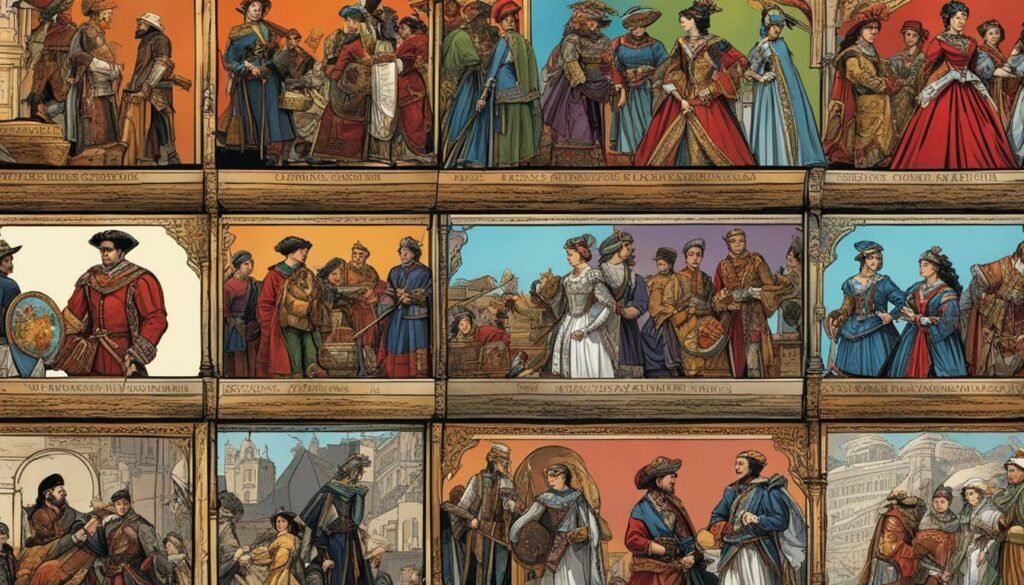
To enforce this social hierarchy, the Spanish authorities established strict rules and regulations that determined the rights and privileges of different social groups. Spaniards, particularly those born in Europe (Peninsulars), held the highest positions of power, both economically and politically. Creoles, who were Spaniards born in the Americas, resented the preference given to Peninsulars by the Spanish crown, leading to tensions within the colonial society.
The intermediate racial groups, known as castas, occupied a middle position in the Spanish Class System. These castas were individuals of mixed Spanish, Indigenous, and African ancestry and were officially banned from holding positions of influence. Indigenous people, who were conquered by the Spanish, were at the bottom of the social hierarchy and primarily engaged in agricultural labor, while slaves were brought from Africa to provide labor, particularly in the lucrative sugar industry.
| Rank | Social Group | Description |
|---|---|---|
| 1 | Spaniards (Peninsulars) | European-born Spaniards with highest social and economic status |
| 2 | Spaniards (Creoles) | Spaniards born in the Americas, lower social and economic status compared to Peninsulars |
| 3 | Castas | Individuals of mixed Spanish, Indigenous, and African ancestry, limited rights and social mobility |
| 4 | Indigenous People | Conquered native population engaged in agricultural labor |
| 5 | Slaves | Enslaved Africans used primarily as laborers, particularly in the sugar industry |
“The Spanish Class System was a mechanism of control and exploitation, with Spaniards holding the highest positions of power and privilege, while the lower classes were subjugated and marginalized. The system reflected the racial and social prejudices of the time, perpetuating inequality and injustice for centuries.” – Historian, Dr. Maria Gomez
The Spanish Class System had a lasting impact on the societies of the American colonies, even after the independence of Latin American countries. The legacy of this system can still be observed today, with socio-economic disparities and racial inequalities persisting in many Latin American nations.
Social Groups in the Spanish Class System
The Spanish Class System was characterized by a hierarchical structure, with distinct social groups occupying different positions in society. These social groups played a crucial role in shaping the dynamics and power distribution within Spanish American colonies during the colonial era.
The highest social group consisted of the Spaniards, who held positions of economic and political power. Within this group, there was a division between Peninsulars, Spaniards born in Europe, and Creoles, Spaniards born in the Americas. However, there existed animosity and tension between the two factions, as the Creoles resented the preferential treatment given to the Peninsulars by the Spanish crown.
| Social Groups | Position in Hierarchy |
|---|---|
| Spaniards | Top |
| Mixed-race individuals (castas) | Middle |
| Indigenous people and slaves | Bottom |
The middle group in the Spanish Class System comprised individuals of mixed Spanish, Indigenous, and African ancestry, commonly referred to as castas. Officially banned from holding positions of influence, castas faced restrictions and discrimination within colonial society. This perpetuated the notion of racial hierarchy and reinforced the social divisions within Spanish American colonies.
At the bottom of the social hierarchy were the indigenous people, who were considered a conquered population. They often engaged in agricultural labor and were subjected to oppressive conditions. Slavery was also introduced, with slaves primarily utilized as laborers in industries such as the sugar industry. Their position in society was one of extreme exploitation and subjugation.
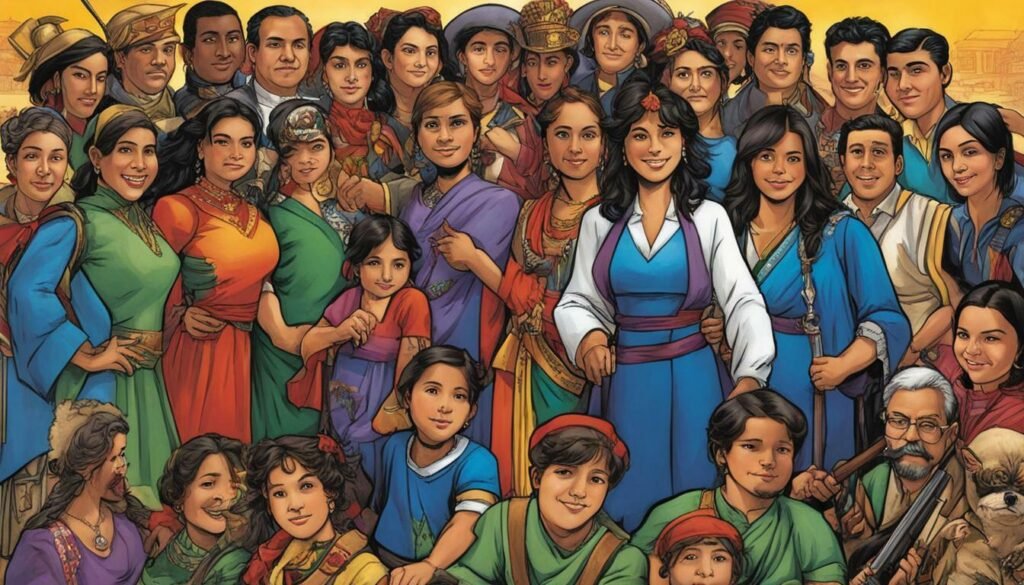
“Casta paintings played a crucial role in visually depicting the racial hierarchy and social divisions within Spanish American colonies. They reinforced the existing power dynamics by depicting the mixing of races and the subsequent classification of individuals into distinct castes.” – Art historian, Dr. Maria Rodriguez
Casta paintings emerged in the late 18th century as a popular genre of art in the Spanish American colonies. These paintings depicted the intricate system of racial classification and emphasized the superiority of Spaniards, the dominance of Peninsulars, and the subordinate position of castas, indigenous people, and slaves. Casta paintings served as a visual manifestation of the social order, solidifying the Spanish Class System in the collective consciousness of society.
The Spanish Class System persisted even after the independence of Latin American countries in the early 19th century. Despite political and social changes, the social hierarchy based on race remained deeply ingrained within these societies. The legacy of the Spanish Class System continues to influence societal structures and power dynamics in Latin America to this day.
| Spanish Class System | Persistence and Lasting Impact |
|---|---|
| Racial hierarchy | Continued to shape societies |
| Social divisions | Deeply ingrained |
Spaniards in the Spanish Class System
Spaniards held positions of economic and political power in the Spanish Class System, with a clear distinction between Peninsulars and Creoles. The Peninsulars, being of Spanish-born European descent, were viewed as superior and enjoyed privileges and preferential treatment from the Spanish crown. They held high-ranking positions in government and the Catholic Church, controlled the economy, and monopolized trade and commerce.
On the other hand, the Creoles, who were Spaniards born in the Americas, often felt marginalized and excluded from positions of authority. Despite their wealth and influence, they were considered second-class citizens compared to the Peninsulars. This distinction created tension and resentment within Spanish American society.
One factor contributing to this division was the Spanish crown’s reluctance to grant noble titles to wealthy Creoles in the Americas. As a result, there was a lack of noble titles in Spanish society in the New World, further reinforcing the social hierarchy between Peninsulars and Creoles.
The Peninsular-Creole Divide
The preference given to Peninsulars by the Spanish crown created a significant divide between them and the Creoles. The Peninsulars enjoyed greater opportunities for social mobility and advancement, while the Creoles faced numerous restrictions and limitations. This division fueled a sense of frustration and paved the way for the emergence of independence movements in Latin America during the 19th century.
To illustrate the stark contrast between Peninsulars and Creoles in the Spanish Class System, we can refer to a quote from Mexican revolutionary leader Jose Maria Morelos: “He who is a native of this country should have the same rights as the Spaniards, because everyone has the same red blood in their veins and we are all sons of Adam and Eve.” This quote reflects the sentiment among the Creoles that they should be treated as equals and have the same rights as the Peninsulars.
Overall, the Spanish Class System maintained a clear division between Spaniards of European descent, with the Peninsulars at the top and the Creoles below them. This hierarchy shaped the social, economic, and political landscape of Spanish American colonies and left a lasting impact on the societies of the New World.
| Peninsulars | Creoles |
|---|---|
| Held positions of power | Marginalized and excluded |
| Monopolized trade and commerce | Faced restrictions and limitations |
| Enjoyed privileges | Resented the preferential treatment |
Mixed-Race Individuals in the Spanish Class System
Mixed-race individuals, known as castas, occupied a middle position in the Spanish Class System and faced various restrictions in colonial society. These individuals were born from the union of Spanish colonizers, indigenous people, and African slaves, resulting in a complex racial hierarchy. The Spanish Crown exerted strict control over the social mobility of castas, limiting their opportunities for advancement and ensuring the preservation of the existing class structure.
The casta system classified individuals based on their percentage of European, indigenous, and African ancestry, resulting in a wide range of racial categories and labels. There were castas such as mestizos, individuals with both Spanish and indigenous heritage, mulattos, individuals with Spanish and African heritage, and zambos, individuals with indigenous and African heritage.
These mixed-race individuals often faced discrimination and prejudice, as they were considered inferior to the pure-blooded Spaniards. They were restricted from holding positions of power and authority, denied access to certain privileges enjoyed by the higher classes, and subjected to social stigmatization. The restrictions imposed on castas extended to marriage, education, and occupation, further segregating them from the upper echelons of society.
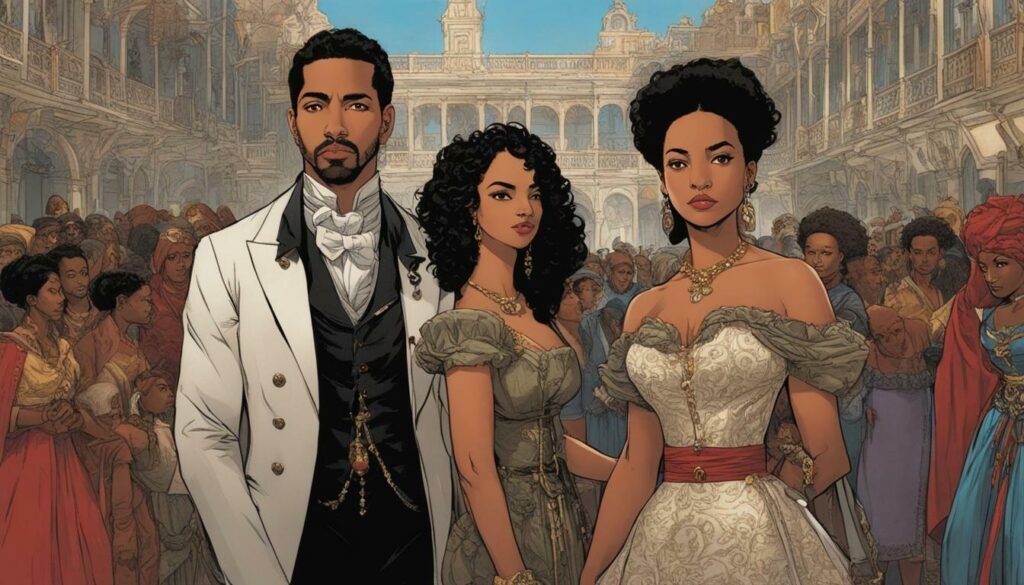
| Racial Category | Parentage | Position in the Hierarchy |
|---|---|---|
| Mestizo | Spanish and Indigenous | Occupied a higher position than indigenous people but lower than Spaniards |
| Mulatto | Spanish and African | Considered below mestizos and further marginalized |
| Zambo | Indigenous and African | Occupied a lower position in the hierarchy, often engaged in menial labor |
The complex categorization of individuals based on their racial heritage illustrates the obsession with maintaining a rigid social order and preserving the privileges of the dominant Spanish population. The legacy of the casta system continues to impact the societies of the former Spanish colonies in Latin America, with remnants of racial discrimination and inequality persisting to this day.
Indigenous People in the Spanish Class System
The indigenous people in the Spanish Class System were a conquered population and primarily engaged in agricultural labor. They were subjected to the authority of the Spanish colonizers and forced to work on plantations and in mines, contributing to the wealth of the Spanish empire. Their labor was essential for the economic development of the colonies, particularly in industries such as agriculture and mining.
Despite their pivotal role in the colonial economy, indigenous people faced severe exploitation and discrimination. They were often treated as inferior and subjected to harsh working conditions, with little regard for their well-being. Their land and resources were confiscated, further marginalizing their communities and disrupting their traditional way of life.
The Spanish crown implemented policies that aimed to assimilate indigenous people into Spanish culture and eradicate their own indigenous identity. This included efforts to convert them to Christianity and impose Spanish language and customs. These assimilation policies often led to the erosion of indigenous cultures and traditions, causing significant cultural loss for these communities.
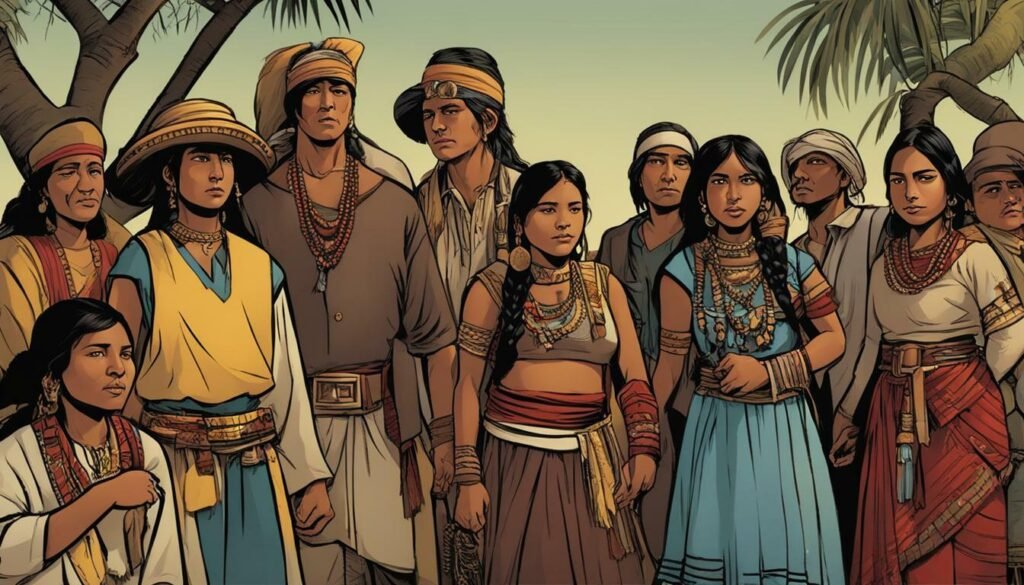
| Key Points |
|---|
| Indigenous people were conquered and subjected to Spanish authority. |
| They primarily engaged in agricultural labor. |
| They faced exploitation, discrimination, and harsh working conditions. |
| The Spanish crown implemented assimilation policies. |
The legacy of the Spanish Class System continues to impact indigenous communities in Latin America today. Many still experience marginalization, poverty, and socio-economic disparities. Efforts are being made to recognize and address historical injustices, promote cultural diversity, and empower indigenous peoples to reclaim their rights and preserve their heritage.
Slavery in the Spanish Class System
Slavery was introduced into the Spanish Class System as a source of labor, particularly in industries such as the sugar industry. African slaves were brought to the American colonies to work on plantations, providing the necessary labor force for the booming sugar industry. These slaves were subjected to brutal conditions, forced to toil for countless hours under the scorching sun.
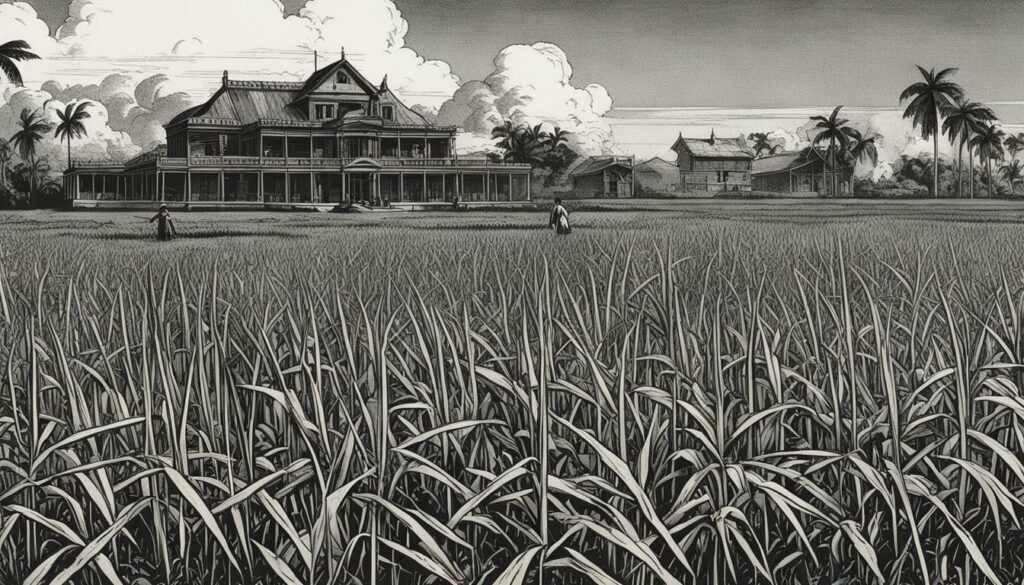
“The slaves were seen as property, treated as subhuman beings. Their lives were marked by grueling labor and constant abuse. The sugar industry relied on their backbreaking work, with profits made at the expense of their freedom and dignity.” – Scholar
The sugar plantations dominated the landscape, with vast fields extending as far as the eye could see. The slaves endured backbreaking labor, cultivating and harvesting the sugarcane. The extraction of the cane juice and the subsequent production of sugar required extensive manpower. Slaves were subjected to inhumane treatment, driven to exhaustion by their overseers.
| Industries | Conditions |
|---|---|
| Sugar | Long hours, harsh physical labor, brutal punishment |
| Mining | Dangerous working conditions, high mortality rates |
| Agriculture | Low wages, minimal rights, lack of freedom |
The Spanish Class System perpetuated the dehumanization of the enslaved individuals, treating them as mere commodities. Their lives were defined by their labor, devoid of basic rights and human dignity. The system further entrenched racial hierarchies, with slavery serving as a means to maintain control over the lower social classes.
Casta Paintings and the Reinforcement of the Spanish Class System
Casta paintings, produced in the late 18th century, played a significant role in reinforcing the racial hierarchy and social divisions of the Spanish Class System. These artworks were a visual representation of the complex racial mixing that occurred in the American colonies and served to solidify the social order established by the Spanish Crown.
The Casta System categorized individuals based on their racial ancestry, creating a strict hierarchy that determined one’s place in society. The paintings depicted different racial combinations, known as castas, and showcased the perceived cultural and physical characteristics associated with each group.
For example, a popular casta painting known as “De español y castiza, mestizo” portrayed a Spanish man and a castiza woman, who was of Spanish and indigenous descent. The painting aimed to highlight the mixed-race offspring resulting from such unions and emphasize their place within the social structure. Through these visual representations, the Spanish Crown sought to maintain control over the colonial population and reinforce the superiority of the Spaniards.
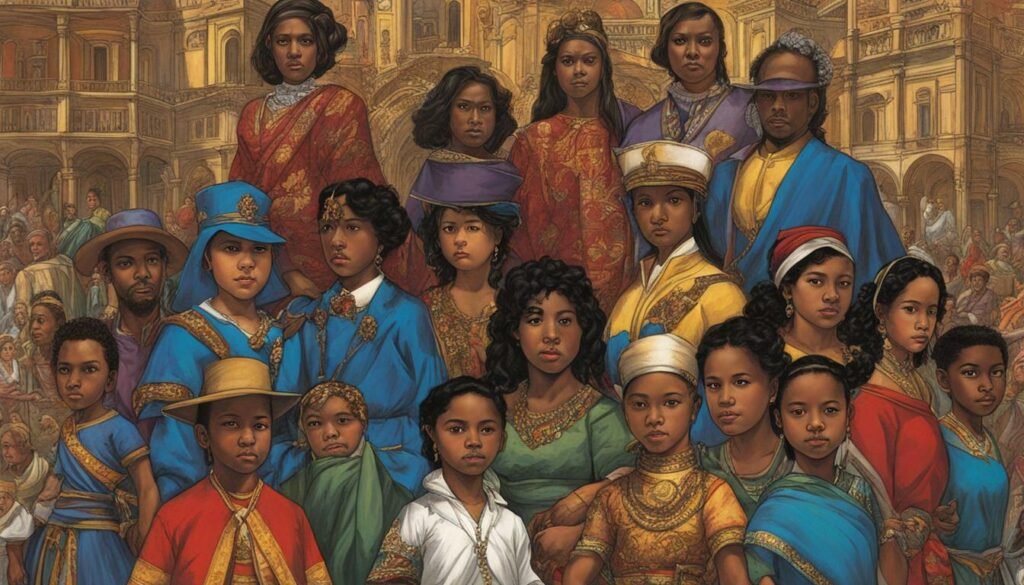
- Table 1: Casta System Racial Categories
| Racial Category | Description |
|---|---|
| Espaňol | Spanish |
| Castiza | Spanish and Indigenous |
| Mestizo | Spanish and Indigenous mix |
| Mulato | Spanish and African mix |
| Zambo | Indigenous and African mix |
| Morisco | Spanish and Moorish (North African) mix |
| Albino | White with albinism |
These paintings not only depicted the racial hierarchy but also perpetuated stereotypes and prejudices associated with specific racial groups. They presented a distorted image of reality, reinforcing the notion that racial purity and social status were intrinsically linked.
The influence of casta paintings extended beyond the realm of art. They deeply influenced society, shaping perceptions of race and maintaining the social divisions that characterized the Spanish Class System. The legacy of these paintings can still be seen today in the lasting impact they had on the societies of the American colonies.
Persistence of the Spanish Class System
Despite the independence of Latin American countries, the Spanish Class System persisted, shaping social hierarchies based on race. The legacy of this system continued to influence the societies of the American colonies long after the end of Spanish colonial rule.
In the newly independent Latin American countries, the social hierarchy created by the Spanish Class System remained deeply ingrained. The divisions between Spaniards, Creoles, mixed-race individuals, indigenous people, and slaves continued to define social relations and opportunities.
The Spanish Class System had a lasting impact on the distribution of power and privilege. Spaniards, particularly Peninsulars, maintained positions of economic and political influence, while Creoles, despite their wealth, were excluded from noble titles and faced resentment from the Peninsular elite.
Table: Socioeconomic Status in the Spanish Class System
| Social Group | Position in the Hierarchy |
|---|---|
| Spaniards (Peninsulars) | Top of the hierarchy, held power and wealth |
| Creoles | Below Spaniards, wealthy but excluded from noble titles |
| Mixed-race individuals (castas) | Middle of the hierarchy, faced restrictions and exclusion |
| Indigenous people | Near the bottom of the hierarchy, engaged in agricultural labor |
| Slaves | Bottom of the hierarchy, used as laborers, particularly in the sugar industry |
These divisions based on race and social status had long-lasting effects on the economies, politics, and cultures of Latin American countries. The persistence of the Spanish Class System meant that racial and socioeconomic inequalities continued to shape societies, leading to ongoing struggles for equality and social justice.
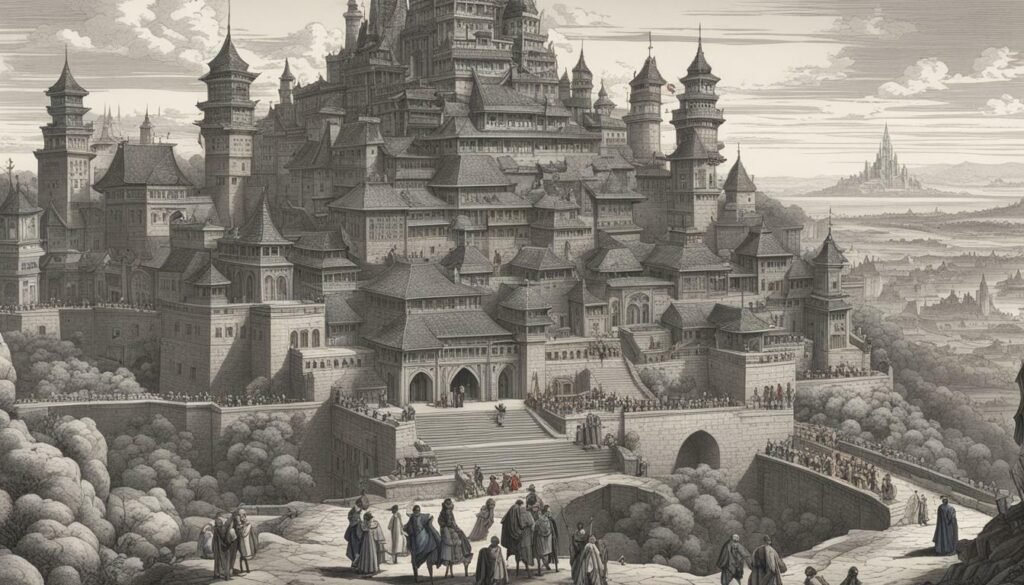
The Spanish Class System in the American colonies left a lasting legacy that is still felt today. Understanding its impact is crucial to comprehending the complexities of Latin American societies and the struggles faced by marginalized communities.
The Lasting Impact of the Spanish Class System
The Spanish Class System left a lasting impact on the societies of the American colonies, shaping social hierarchies and racial divisions for generations to come. This hierarchical structure, established by the Spanish during the colonial era, had far-reaching consequences that continue to resonate in Latin American countries today.
One of the enduring legacies of the Spanish Class System is the social hierarchy it created. Spaniards, particularly the Peninsulars, held positions of economic and political power, while the Creoles, born in the Americas, often resented the preferential treatment given to the Peninsulars by the Spanish crown. This divide between the two groups led to tensions and a lack of noble titles in the New World, as the Spanish Crown was reluctant to grant them to wealthy Creoles.
The Spanish Class System also had a profound impact on racial divisions within society. The intermediate racial groups, known as castas, were officially excluded from positions of influence and faced restrictions in colonial society. Individuals of mixed Spanish, Indigenous, and African ancestry occupied a lower position in the social hierarchy, perpetuating the racial inequality established by the Spanish.
Furthermore, the introduction of slavery in the Spanish Class System added another layer of inequality. Slaves were primarily used as laborers, particularly in the lucrative sugar industry. The institution of slavery further solidified the racial hierarchy, with enslaved individuals occupying the lowest rung of society.
The reinforcement of the Spanish Class System can be seen in the production of Casta paintings in the late 18th century. These artworks depicted the mixing of races and reinforced social divisions based on race. The Casta paintings served as a visual representation of the racial hierarchy, perpetuating the notion of racial superiority and inferiority.
Even after the independence of Latin American countries in the early 19th century, the remnants of the Spanish Class System persisted. The social hierarchy based on race continued to shape societies, with lasting impacts on wealth distribution, access to education and resources, and social mobility.
The Spanish Class System, with its rigid social hierarchies and racial divisions, has left an indelible mark on the societies of the American colonies. Recognizing its lasting impact is essential for understanding the complexities of Latin American history and the ongoing struggles for social justice and equality in the region.
FAQ
Q: What was the class system instituted by the Spanish in their American colonies?
A: The Spanish instituted a hierarchical class system in their American colonies, with Spaniards at the top, mixed-race individuals in the middle, and indigenous people and slaves at the bottom.
Q: How were Spaniards positioned in the class system?
A: Spaniards held positions of economic and political power, with a distinction between Peninsulars (those born in Europe) and Creoles (those born in the Americas). The Creoles resented the preference given to the Peninsulars by the Spanish crown.
Q: Who were the castas and what was their status within the class system?
A: The castas were intermediate racial groups, including individuals of mixed Spanish, Indigenous, and African ancestry. They were officially banned from positions of influence and faced restrictions in colonial society.
Q: What roles did indigenous people and slaves play in the class system?
A: The indigenous population were a conquered people and engaged in agricultural labor, while slaves were introduced as laborers, particularly in the sugar industry. Both groups occupied positions at the bottom of the social hierarchy.
Q: How did the Spanish crown reinforce the class system?
A: The Spanish crown was reluctant to grant noble titles to wealthy Creoles in the Americas, leading to a lack of noble titles in Spanish society in the New World. Additionally, Casta paintings were produced in the late 18th century to depict the racial mixing and hierarchy in colonial society, further solidifying the class system.
Q: Did the class system persist after the independence of Latin American countries?
A: Yes, the class system continued to persist even after the independence of Latin American countries in the early 19th century, with a continued social hierarchy based on race shaping societies.
Q: What was the lasting impact of the Spanish class system?
A: The Spanish class system had a profound and lasting impact on the societies of the American colonies, shaping social hierarchies and influencing power dynamics that continue to be felt to this day.


